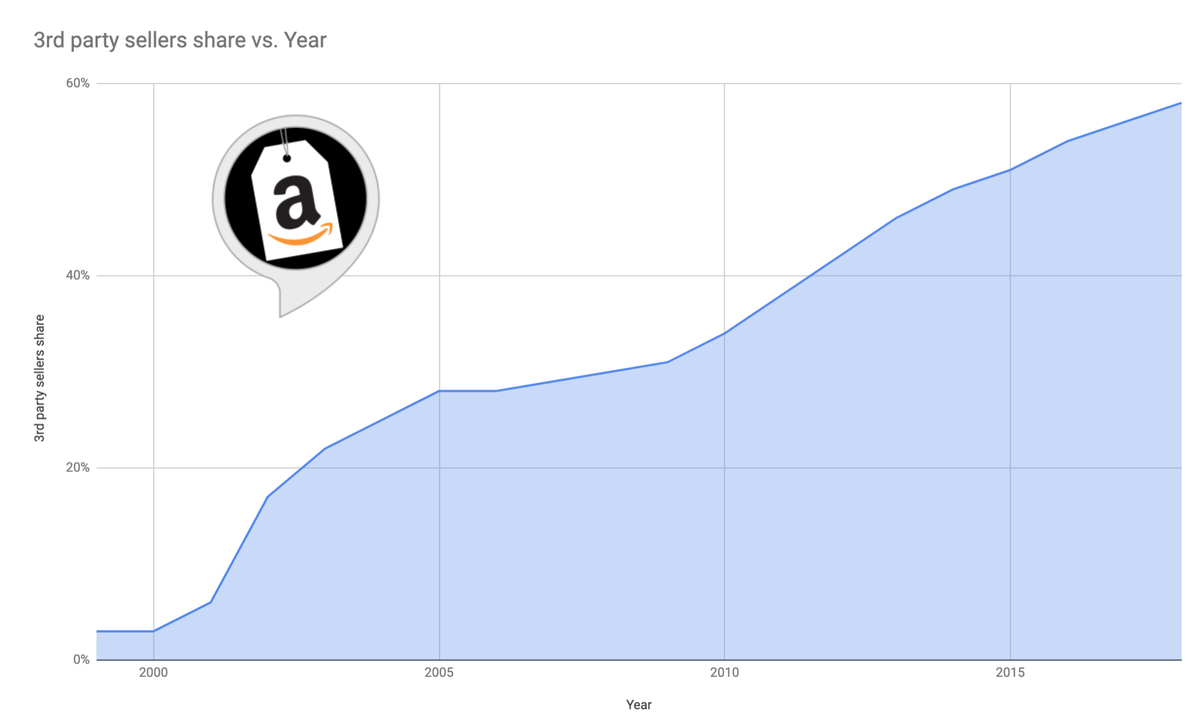Amazon probes sellers on tariff impact as US-China trade tensions escalate
Amazon's recent outreach to marketplace sellers signals strategic data collection as global tariff policies reshape ecommerce landscape.

Amazon has initiated direct communication with its third-party sellers to gather intelligence on how current US tariff policies are affecting businesses operating on its platform. The outreach, occurring just seven days ago on April 8, 2025, represents a significant step as the company prepares for potential supply chain disruptions and pricing challenges.
The communication, sent via email to marketplace sellers, specifically inquires about several key operational areas including sourcing strategies, pricing methods, FBA (Fulfillment by Amazon) inventory management, and international sales impacts. This focused questioning comes at a critical moment as global trade tensions persist between major economies.

"I hope this email finds you well. I wanted to open a discussion about the current US tariff situation and how it's affecting our businesses on Amazon, particularly in terms of logistics. As of April 2025, we're still dealing with the repercussions of various tariff policies, and I believe it's crucial for us that you share current experiences and strategies," states the Amazon communication sent to sellers.
The email explicitly seeks information across four primary business dimensions: sourcing impact, pricing strategies, FBA considerations, and international sales challenges. Under each category, Amazon poses specific questions designed to extract actionable insights from its seller community.
Want to reach marketing professionals and decision-makers? Showcase your brand, tools, or services with our sponsored content opportunities.
According to Vanessa Hung, CEO of Online Seller Solutions and an Amazon expert, this outreach should not be viewed as a casual survey but rather as strategic intelligence gathering. "It's not really a survey. It's Amazon listening in," Hung stated in her LinkedIn post discussing the email campaign.
The timing of Amazon's inquiry coincides with heightened trade tensions between the United States and China. Current discussions indicate potential tariff increases on Chinese imports could reach anywhere from 34% to 125%, or even as high as 350%, though exact figures remain undetermined. China has signaled retaliatory measures of comparable magnitude.
These tariff implications are particularly significant for Amazon's business model, as industry analysts estimate approximately 70 percent of products sold on the platform are imported, with a substantial portion originating from China. The most vulnerable product categories include electronics, apparel, and household goods – precisely the segments that constitute Amazon's core merchandise offerings.
For third-party sellers who comprise the majority of Amazon's retail ecosystem, the tariff situation presents multiple operational challenges. Higher procurement costs may necessitate price increases, potentially reduced profit margins, or exploration of alternative sourcing locations outside tariff-affected regions. These decisions must be made while maintaining competitive positioning on a platform where price sensitivity drives consumer behavior.
Amazon's information-gathering approach aligns with its data-driven operational model. By understanding the varied impacts across its seller ecosystem, the company can potentially develop targeted solutions, adjust fee structures, or implement policy changes to maintain marketplace stability during economic disruption.
Market analysts present contrasting perspectives on how the tariff situation might ultimately affect Amazon's competitive position. Some suggest the e-commerce giant could emerge relatively stronger compared to traditional retail competitors like Walmart and Target.
"Analysts think Amazon might come out winning," notes Hung in her assessment of the situation. "Because when things get expensive everywhere, people still pick the fastest and most convenient option. That's still Amazon."
This potential advantage stems from Amazon's operational flexibility. The company maintains multiple levers to mitigate tariff impacts, including the ability to rapidly adjust pricing algorithms, negotiate with suppliers, temporarily absorb margin reductions, or restructure category presentations to emphasize domestically sourced alternatives. Traditional retailers frequently face more rigid operational constraints.
Seller reactions to Amazon's outreach have been mixed. Some respondents view the communication as a positive sign of collaboration during challenging market conditions. Others express skepticism regarding Amazon's motivations, questioning whether information shared might ultimately lead to fee increases or policy adjustments that further squeeze seller margins.
One seller commenting on Hung's LinkedIn post noted: "When we started selling on Amazon 10 years ago, the cut was about 15%. Now, with constant new fees, ad costs, and everything else baked in, we're paying over 50% per order."
Another marketplace participant observed: "It's odd that they ask the sellers for this information but don't share any tips or advice about what they think might be helpful to navigate this situation."
The tariff situation represents only the latest challenge for Amazon's third-party seller community, which has navigated numerous operational shifts in recent years including pandemic-related supply chain disruptions, evolving marketplace rules, and increasing competition from international sellers.
For marketing professionals observing this development, Amazon's approach offers valuable strategic insights. The direct outreach demonstrates how major platforms can leverage their seller networks as distributed intelligence systems, gathering real-time market impacts more efficiently than traditional research methods would allow.
Additionally, the situation highlights the critical importance of supply chain flexibility in modern retail operations. Brands heavily dependent on single-source manufacturing regions face disproportionate risk during trade disruptions compared to those maintaining diversified production capabilities.
The tariff implications extend beyond individual seller concerns and reflect broader trends in global commerce. Companies increasingly must factor geopolitical considerations into business planning, with trade policies capable of rapidly altering competitive landscapes across entire product categories.
Marketing professionals should note how Amazon's position at the center of a vast retail ecosystem allows it to gather granular data across diverse business models. This information asymmetry potentially enhances the company's ability to navigate economic disruptions more effectively than either individual sellers or competing retail platforms.
For many consumers, the ultimate impact of these tariff dynamics may manifest as price increases across popular product categories. Amazon's strategic positioning as both marketplace and first-party retailer provides unique visibility into price elasticity across categories, potentially informing how the company navigates inflationary pressures.
The email campaign represents one element of Amazon's broader strategy for addressing tariff impacts. The company likely maintains additional internal workstreams focused on inventory management, supplier relationships, and platform economics to ensure operational resilience regardless of how trade negotiations evolve.
As one seller commented: "Fine-tuning strategy. Restructuring categories. Push new tools." This assessment reflects the expectation that Amazon will leverage insights gained through seller outreach to implement systemic adjustments that maintain platform stability during economic disruption.
While Amazon's immediate focus centers on understanding current impacts, the long-term implications of persistent tariffs could potentially reshape global supply chains. Manufacturers may accelerate production shifts to non-tariff regions, creating new sourcing opportunities and challenges for both Amazon and its seller community.
The situation remains fluid as international trade negotiations continue. For Amazon's marketplace participants, the company's outreach presents an opportunity to communicate business challenges directly to the platform, potentially influencing future policy adjustments.
As Hung advised sellers: "So when you get one of these emails, don't ignore it. It might be good for them to hear your story."
Timeline
- Late 2024: US-China trade tensions escalate with discussions of potential new tariff implementations
- Early 2025: Initial tariff impacts begin affecting supply chains for Amazon sellers
- April 8, 2025: Amazon initiates email outreach to sellers seeking information on tariff impacts
- April 15, 2025: Amazon continues gathering seller feedback as uncertainty persists regarding potential tariff levels (34% to 350%)
- Ongoing: Sellers navigate challenging operational environment while awaiting more definitive trade policy clarity



